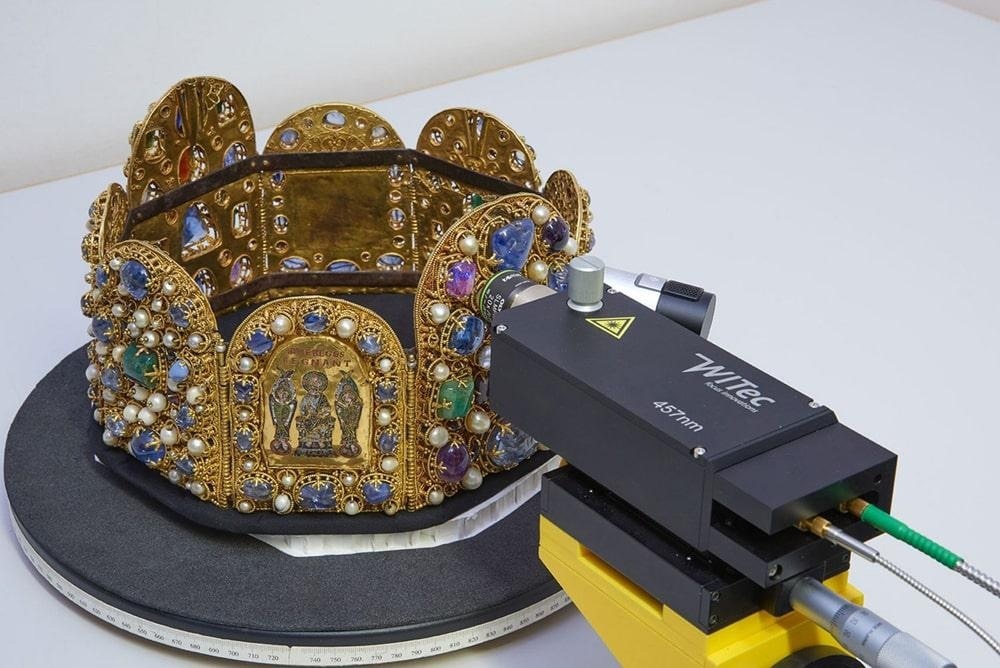From WITec GmbHReviewed by Maria OsipovaFeb 1 2023
Raman spectroscopy reveals gemstone details.
 WITec Raman probe positioned to aquire data from the Imperial Crown. © KHM-Museumsverband
WITec Raman probe positioned to aquire data from the Imperial Crown. © KHM-Museumsverband
The Kunsthistorisches Museum (KHM) in Vienna is using advanced instrumentation, including a WITec Raman microscope, to conduct the most thorough analysis to date of the Imperial Crown of the Holy Roman Empire. This singular artifact of European history and masterpiece of the western goldsmith’s art is kept at the Imperial Treasury after being used in the coronation of Kings and Emperors for many centuries.
Given the significance and inestimable value of the crown, it was necessary to bring the laboratory to the sample. A cooperation between the research group of Dr. Martina Griesser, Head of the Scientific Laboratory at the KHM, Prof. Dr. Lutz Nasdala from the Institute of Mineralogy and Crystallography at the University of Vienna, and WITec resulted in a portable Raman system being installed in the Treasury for the investigation. Following a brief training session, data could be acquired that provided detailed insight into the history of the object.
Prof. Dr. Nasdala used Raman and photoluminescence spectroscopy to characterize the crown’s set of 172 gemstones, which was found to consist of 71 sapphires, 50 garnets, 20 emeralds, 13 amethysts, four chalcedonies, three spinels, and eleven differently colored pieces of glass. He also discovered evidence of heating to near 1000 °C in a red spinel.
Preliminary scientific data was announced at a press conference on January 30 in Vienna, where the crown’s historical context was described and WITec’s contribution was noted. Further results will be published soon in the Journal of Gemmology. An exhibition on the project is planned to open at the Kunsthistorisches Museum.
We encourage everyone with an interest in science, art history and archaeology to explore this fascinating study.